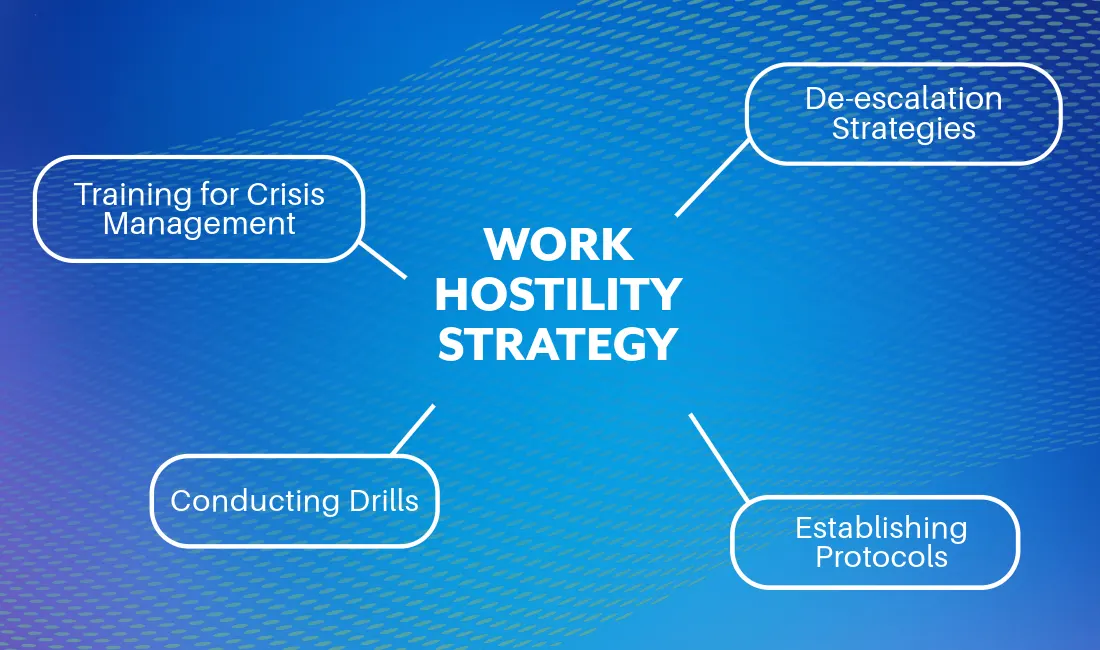Workplace hostility and security strategies have evolved significantly over time, influenced by pivotal historical events. One of the earliest to make headlines was the 1892 steel strike in Pittsburgh, PA, which stands as a significant juncture in American labor history, emblematic of the labor rights struggle amidst the Industrial Revolution. The strike began on July 1, at the Homestead Works of the Carnegie Steel Company and sparked by harsh working conditions and insufficient wages. The management, under the leadership of Henry Clay Frick, chose to reject the union contract, opting for a confrontational stance by deploying private security detectives and strikebreakers. This aggressive move led to violent confrontations, capturing national attention and underscoring the profound rift between laborers and industrial magnates, such as Carnegie. This period of intense hostility garnered national attention and highlighted the profound right between laborers and industrial magnates such as Andrew Carnegie. Unfortunately, the strike concluded in defeat for the workers by November 1892, leading to a notable change in labor relations characterized by heightened hostility towards collective labor actions. Despite these challenges, the Homestead Strike became a pivotal event influencing approaches to managing workplace tensions and security strategies. The lessons learned from the Homestead Strike emphasize the importance of implementing balanced and empathetic strategies for handling employee disputes and ensuring that security interventions are designed to resolve rather than escalate conflicts. This historical context provides valuable insights for contemporary workplace management, illustrating how past challenges can inform current practices in creating a secure and supportive work environment.
Evolving Workplace Safety: From Reactive to Proactive
The decision by Carnegie Steel to deploy private detectives during the Homestead Strike heightened works’ apprehensions and mistrust, underscoring a broader corporate resistance to collective organizing and employee autonomy. This era of heightened hostility exacerbated workplace conflicts, prompting laborers to seek legal protection and better working conditions despite the risks involved.
However, the intense national response to Homestead Strike catalyzed a pivotal shift in corporate America. The ensuing dialogue on economic fairness and corporate influence marked a transition towards more proactive safety measures. This shift laid the groundwork for future labor legislation and initiatives aimed at fostering safer and more equitable workplace environments, ultimately moving from a reactive stance to a proactive approach in managing workplace hostility and security.
Establishing workplace safety and managing aggression are critical for fostering a secure and productive environment. Effective strategies include conflict resolution training, anti-harassment policies, and promoting a culture where incidents are promptly reported and addressed. Prioritizing these measures not only mitigates risks but also enhances employee well-being and organizational success.
In contemporary workplaces, managing hostility and preparing for crises are essential for maintaining safety and productivity. Proactive tactics such as crisis response protocols and conflict resolution training are crucial for defusing potential conflicts and maintaining organizational stability. Is your workplace culture centered on safety, respect and resilience?
Workplace Hostility Management and Security Strategies: A Comprehensive Approach
In today’s dynamic work environment, cultivating a culture centered on safety, respect and resilience is foundational for maintaining a positive and productive workplace. By fostering mutual respect and prioritizing safety, organizations can prevent conflicts and create an atmosphere where employees feel secure and valued. Implementing these core values with a physical safety presence and other strategic measures represents a comprehensive approach to workplace safety.
Integrating off-duty law enforcement and on-site security teams into your workplace security strategy offers a multifaceted defense against potential threats. Off-duty law enforcement bring specialized training and swift response capabilities that significantly enhance overall security, creating a safer environment conducive to conflict resolution and employee well-being. When combined with dedicated internal and external security teams, this collaboration fosters a more robust security framework, improving both coverage and response times to incidents.
Addressing workplace hostility is a crucial element of effective management and security. Hostility, which can manifest as verbal abuse, bullying, harassment, or physical altercations, undermines employee morale and organizational cohesion. To counteract these issues, implementing comprehensive policies and training programs are essential for fostering a respectful work environment and mitigating legal risks.
Workplace tensions, driven by factors such as competition for resources or recognition, conflicting objectives, poor communication, and perceptions of inequity, can act as catalysts for hostility and conflict. Organizational changes like restructurings or layoffs, coupled with individual stressors such as fatigue and unresolved personal conflicts, can further exacerbate these tensions. Recognizing these triggers enables organizations to proactively address underlying issues through conflict resolution training, enhance communication strategies, and cultivate a supportive workplace culture that values equity, transparency, and mutual respect.
In addition to prevention, workplace hostility resolution is imperative. Proactive measures lessen the chances, but when and if an issue arises, you need to know you are prepared. By integrating off-duty law enforcement into your overall security approach and addressing the factors that contribute to workplace hostility, organizations can reduce the risk of conflict and foster a positive, productive work environment. This dual approach not only strengthens security but also supports effective management practices, creating a safer and more respectful workplace.
Developing a Comprehensive Crisis Response Plan
In the realm of workplace hostility management, particularly in anticipation of potential protests or strikes, a tailored security plan is indispensable for safeguarding organizational stability and employee well-being. Such a plan should meticulously outline response practices tailored to the specific risks associated with these events, including disruptions to operations, safety concerns, and the potential for escalated tensions. By conducting thorough risk assessments and collaborating closely with security experts, HR professionals, and legal advisors, organizations can develop proactive measures to mitigate these risks. Key components of this plan should include clear communication protocols, strategies for de-escalation and conflict resolution, and guidelines for managing interactions with external parties like demonstrators or picketers. Regular training sessions for employees on handling sensitive situations and understanding their rights and responsibilities during protests or strikes further reinforces preparedness. By implementing a tailored security plan focused on these specific workplace risks, organizations can efficiently manage challenges, maintain productivity, and uphold a safe and respectful work environment for all stakeholders involved.
Forming a comprehensive crisis response team is a cornerstone of a successful work hostility management and security strategy. By assembling a dedicated team with clearly defined roles and responsibilities, organizations can ensure a swift and coordinated response to potential threats or incidents. It is crucial to involve the security team from the outset of the planning phase, as they possess critical insights and operational expertise essential for execution. The security team’s involvement assures maneuvers for prevention, intervention, and resolution are aligned with the organization’s security protocols and regulatory requirements. Each member of the crisis response team brings unique skills and perspectives that contribute to a robust framework for managing workplace hostility proficiently.
Creating and implementing a comprehensive crisis management protocol is crucial for fostering a secure and productive work environment. This process begins with assembling a crisis management team from security, HR, legal, and senior management, each bringing unique skills and perspectives. Clearly defined roles and responsibilities, along with established communication channels and escalation protocols, ensure swift and coordinated responses during emergencies. This collaborative approach enhances the organization’s ability to mitigate risks and promotes a culture of safety and preparedness among all employees. Next, conducting a thorough risk assessment helps identify potential threats and vulnerabilities within the workplace, enabling proactive measures to mitigate these risks. Regular training and simulations then prepare employees and security personnel to effectively execute the protocol in real-life scenarios, fostering a culture of readiness and resilience. By continuously reviewing and updating the crisis management protocol based on lessons learned and emerging threats, organizations demonstrate their commitment to safeguarding employees and maintaining operational continuity in the face of adversity.
Security Measures for Hostility Management
The implementation of stringent physical security measures, such as access controls and video surveillance systems, plays a pivotal role in ensuring asset protection and fostering a secure work environment. Access controls, encompassing advanced technologies like keycard systems and biometric scanners, act as formidable deterrents against unauthorized entry, safeguarding confidential data and valuable assets from potential risks. Beyond fortifying defenses, these measures offer valuable surveillance data for incident mitigation and preemptive actions by continuously monitoring ingress and egress activities in real-time.

Security personnel play a vital role in preventing and mitigating hostile situations through proactive patrols and prompt intervention. Their training in conflict resolution establishes that incidents are handled professionally, minimizing disruptions and promoting a safe work environment.
Leveraging off-duty law enforcement substantially bolsters workplace security, given their expertise in crisis management and law enforcement. Their inclusion not only fosters employee confidence but also guarantees swift and expert handling of security issues. This proactive strategy refines overall workplace safety, fostering a climate of security and reassurance for all staff members. By capitalizing on their skills, businesses can adeptly manage risks and cultivate a safe environment conducive to productivity and peace of mind.
Off-duty law enforcement demonstrate exceptional proficiency in handling and defusing hostile situations, leveraging their comprehensive training in conflict resolution and crisis management. Their adeptness in evaluating and addressing threats with precision and composure proves indispensable in critical scenarios. Whether resolving disputes or managing emergencies, these officers adhere to stringent professional standards and safety procedures, securing the preservation of order and the mitigation of disruptions to business activities.
Advanced technologies like AI and biometrics boost threat detection and access control, enhancing overall security effectiveness. These innovations enable proactive risk mitigation and secures compliance with security protocols, safeguarding organizational assets and personnel.
Mobile applications streamline incident reporting and response, facilitating rapid communication and resource allocation during emergencies. Real-time updates and notifications empower employees to contribute to a safe workplace environment actively.

Training and Preparedness
Training in Crisis Management and Emergency Response
Equipping employees and security personnel with crisis management skills is essential for effective threat and identification and response. To ensure accessibility and effectiveness, organizations should develop a comprehensive crisis management plan with professional input and make it readily available through a centralized portal or shared spaces. Additionally, offering online training modules and web-based resources allows employees to engage with the material at their convenience. Specialized de-escalation training for management further enhances their ability to handle conflicts and maintain control during emergencies. By implementing these strategies, organizations can improve overall safety and capability.
Conducting Drills and Simulations
Scheduling regular workplace emergency response drills develops readiness and enhances teamwork in managing security threats. These exercises simulate real-life scenarios, allowing for evaluation and refinement of crisis management protocols to ensure optimal response capabilities. Regular drills and scenario-based exercises reinforce readiness and uphold coordinated responses during crises.
Training in De-escalation Strategies
Training in de-escalation strategies prepares security personnel and managers to defuse tense situations professionally and prevent escalation. Scenario-based training builds confidence in applying de-escalation techniques, promoting a culture of conflict resolution and safety.
Establishing Protocols for Managing Confrontations
Establishing clear protocols for managing confrontations safely minimizes risks of violence and maintains a respectful workplace environment. These protocols outline steps for evaluating situations, maintaining communication, and employing de-escalation techniques to resolve conflicts effectively.
Measuring Success and Continuous Improvement
The evaluation of workplace hostility management and security strategies hinges on the establishment of precise metrics to assess the efficacy of implemented security protocols. Key performance indicators may encompass incident response times, the frequency of security breaches, and employee satisfaction surveys gauging perceptions of safety. These metrics offer valuable insights into the strengths and weaknesses of existing security measures. For instance, tracking incident response times enables the assessment of security teams’ efficiency in promptly addressing threats, while monitoring incident frequency unveils patterns and areas necessitating additional security measures or interventions. Additionally, organizations should regularly review crime rates, threats, and news events in surrounding cities or regions to stay informed about potential risks. Partnering with a reputable security company that provides comprehensive monitoring and analysis of local crime trends can offer advanced warnings and keep organizations updated on emerging threats. Evaluating crime trends and statistics should be part of an annual review process, if not quarterly, to ensure that security measures remain effective and relevant. By scrutinizing these metrics and integrating local crime data, organizations can pinpoint trends, adapt strategies as necessary, and allocate resources more efficiently to bolster overall security readiness.

Feedback and continuous improvement are crucial components for maintaining robust security protocols in response to evolving threats. Regularly seeking input from employees, security personnel, and stakeholders provides valuable firsthand insights into the effectiveness and practicality of existing security measures. This feedback not only aids in identifying potential vulnerabilities or areas needing refinement but also cultivates a culture of collaboration and transparency within security management. Partnering with a security company that supplements their services with off-duty law enforcement can further enhance this process, as these professionals offer direct insights into local challenges and are often “in the know” about current and upcoming threats. By integrating such expertise and feedback into the review process, organizations can swiftly adapt to emerging threats and regulatory modifications, ensuring that security protocols remain pertinent and efficient. Continuous improvement initiatives, underpinned by ongoing evaluation, local crime analysis, and proactive feedback mechanisms, exemplify a dedicated approach to enhancing workplace safety and security, ultimately preserving employee well-being and safeguarding organizational assets.
Key Takeaways for Enhanced Workplace Security
Through the implementation of robust security measures encompassing rigorous physical controls, cutting-edge technologies, and the strategic deployment of off-duty law enforcement personnel, organizations can mitigate risks and provide swift responses to potential threats. Equally essential is the focus on crisis readiness through thorough training, regular drills, and the establishment of precise protocols for conflict resolution and de-escalation. These proactive initiatives not only safeguard employees and company assets but also foster a culture of respect, resilience, and continuous advancement. By prioritizing proactive hostility management, businesses not only augments workplace safety but also elevate employee morale, productivity, and overall organizational success amidst the evolving landscape of workplace dynamics and security complexities.
Call to Action for Workplace Safety and Security
As employers navigate the complexities of modern workplaces, it is imperative to prioritize the safety and security of their workforce. By proactively addressing hostility management and implementing robust security methods, employers not only protect their employees but also safeguard organizational integrity and productivity. The call to action is clear: invest in comprehensive security measures tailored to the specific needs of your workplace, including physical security enhancements, advanced technologies for threat detection, and continuous training in crisis response and de-escalation techniques. Foster a culture where safety is paramount, empowering employees to report concerns without fear and assuring that all incidents are addressed swiftly and effectively. By prioritizing workplace safety and security, employers not only fulfill their duty of care but also cultivate an environment where employees thrive, innovation flourishes, and the organization thrives in an increasingly secure and resilient manner.As employers navigate the intricacies of contemporary workplaces, it is essential to prioritize the safety and security of their workforce. Here are actionable steps to accomplish this:
Foster a Culture of Safety
Establish a work culture that prioritizes safety. Encourage transparent communication and empower employees to voice concerns without apprehension of repercussions.
Invest in Comprehensive Security Measures
Tailor security protocols to the specific requirements of your workplace. This entails the implementation of physical security upgrades like access controls and surveillance systems. Access controls are crucial for managing who can enter various areas of your facility and include a range of systems such as badging systems, which require employees to use ID cards to gain access; guard shacks and gate houses that control entry points and monitor visitor access; key fobs, which provide electronic access and restricted areas; biometric systems, such as fingerprint or retina scanners, which enhance security through unique personal identifiers; and electronic locks that can be programmed to restrict or allow access based on set criteria. By integrating these access control measures with advanced surveillance systems, you can create a robust security infrastructure that protects your workplace from unauthorized access and potential threats.
Utilize Advanced Technologies
Integrate cutting-edge technologies for threat detection, such as AI-driven surveillance systems and biometric authentication methods, to fortify security measures.
Provide Continuous Training
Ensure all staff members undergo regular training in crisis response and de-escalation strategies. This equips employees to manage incidents proficiently and cultivates a safety-conscious environment.
Future Trends in Workplace Security
Looking ahead, the landscape of workplace security is poised for significant advancements driven by emerging technologies and evolving threats. Future trends indicate a shift toward more sophisticated AI-driven surveillance systems capable of real-time threat detection and response, enhancing preemptive security measures. Biometric authentication methods are likely to become more prevalent, offering seamless access control while bolstering security protocols. Additionally, the integration of devices and data analytics promises to provide deeper insights into employee behavior and operational patterns, further optimizing security methods. As workplaces become more interconnected and globalized, cybersecurity measures will also play an increasingly pivotal role in safeguarding digital assets and sensitive information. Embracing these future trends requires proactive adaptation and investment in cutting-edge solutions to stay ahead of potential threats, ensuring that workplaces remain safe, resilient, and conducive to sustained growth and innovation.
Navigating these advancements effectively requires not only proactive adaptation and investment in cutting-edge solutions but also strategic partnerships with established security and off-duty companies. Collaborating with these experts can help businesses stay ahead of potential threats while managing costs. Their specialized knowledge and experience are invaluable in crafting comprehensive and future-ready security plans, ensuring that workplaces remain safe, resilient, and conducive to sustained growth and innovation.
